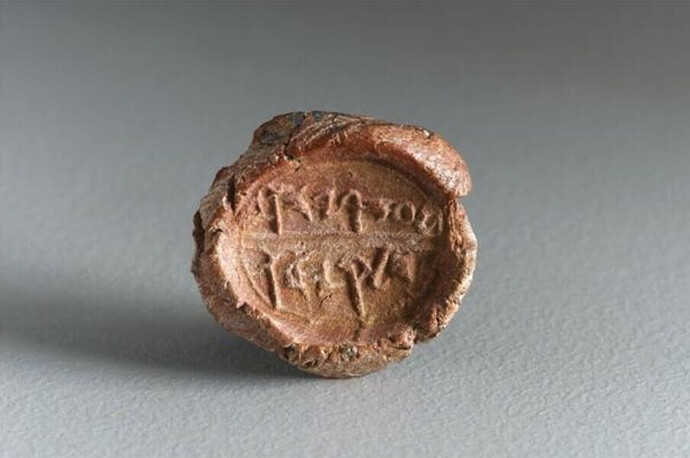I havent read all of the responses above…so if i repeat anything, my apologies.
the reason why i have such a strong interest in the historicity of the bible narrative is because despite the apparent scientific evidence presented on these forums supporting evolutionary THEORY, we also have a wealth of physical evidence for the authenticity of the Bible narrative concerning as a whole.
Archeological evidence is far superior to any theory because we know for a fact that its real history we are looking at and touching. These artifacts cannot be ignored.
It is not necessary for me to pretend to know what may have happened a million years ago by working backwards. I am able to research known archeological history and use that to help authenticate the bible narrative. When both line up, i can be sure i have the correct understanding of the history of this world according to God’s own word.
I see a lot of irony in the fact that despite the referenced claims of so called Christian scientists here on these forums, archeology largely supports the biblical narrative and its known timelines and not the evolutionary ones.
Because of this, I can confidently claim that i have the right theology because it is also supported by real historical archeological evidence that proves names, places, times, even years. If the bible is right about these things, then its a no brainer that its also right about everything else!
Some examples below
- The Tale of Sinuhe (1800 B.C). This is the story of a runaway Egyptian official who hides from Egyptian soldiers stationed at a military defense station called Deir El-Balah in Philistia. It was an extensive Egyptian fortification that existed along the route to the North protecting Egypt from Philistine attack (which is referenced in Exodus 13:17)
17When Pharaoh let the people go, God did not lead them along the road through the land of the Philistines, though it was shorter. For God said, “If the people face war, they might change their minds and return to Egypt.” 18So God led the people around by the way of the wilderness toward the Red Sea.
-
Excavations at Tel Miqne. The archeologists found here the Biblical site of Ekron (a Philistine city mentioned in the O/T). This discovery is particularly important because it lists some of the rulers of Ekron. One such ruler was the seventh century B.C Philistine King Achish (named in the biblical books of 1 Samuel 27 and 1 Kings 2)
-
King Unas pyramid has inscribed on its walls text that show that Proto-Canaanite language already existed in the 3rd Millennium (Moabite, Ammonite and Hebrew)
-
The Bullae of the Son of לחוא from the City of David. Jerusalem Journal of Archaeology 2: 120–129. These Bullae contain a list of over 50 individuals’ names and quite a number of these individuals are found in the Old Testament. This confirms the historical accuracy of ancient Biblical writings and provide very strong evidence for the historicity of other biblical narratives for which we haven’t yet found direct archeological evidence (ie the Exodus from Egypt)
Some familiar biblical names found on the Bullae:
ל ̇ חוא ןב ̇ םקילאל “(belonging) to ’Elyāqīm son of ’wḥl” In the Bible, ם י ִקָי ְל ֶ א is the original name of Jehoiakim, king of Judah (2 Kgs 23:34; 2 Chr 36:4), of a minister contemporary with the prophet Isaiah (2 Kgs 18–19; Isa 22, 36–37), and of a priest of the Persian period (Neh 12:41)
Another reference to the names found on the Bullae:
Some of the seals bear biblical names, several of which are still used today, such as Pinchas. One particularly interesting seal mentions a man by the name of “Achiav ben Menachem.” These two names are known in the context of the Kingdom of Israel; Menachem was a king of Israel, while Achiav does not appear in the Bible, but his name resembles that of Achav (Ahab)–the infamous king of Israel from the tales of the prophet Elijah. Though the spelling of the name differs somewhat, it appears to be the same name. The version of the name which appears on the seal discovered–Achav–appears as well in the Book of Jeremiah in the Septuagint, as well as in Flavius Josephus (Antiquities of the Jews 15: 7-8). Bullae from the First Temple period found in the City of David excavations
Seal of Azariah Son of Hilkiah. Hilkiah was King Josiah’s right-hand man in restoring a brief religious renaissance to Judah
Seal of Nathan Nathan-Melech, the officer who was in the court; and he burned the chariots of the sun with fire” (2 Kings 23:11



